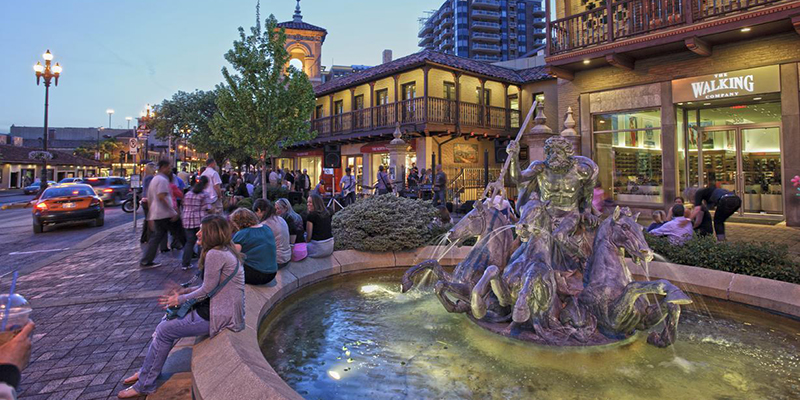
Today I Learned: How KC Earned its "City of Fountains" Nickname
Today I Learned is a blog series from Visit KC and the Kansas City Public Library that shines a light on the history of Kansas City, its culture and the trailblazers who helped shape the City of Fountains.
We explored the history of KC’s many spouts to celebrate Fountain Day—and our beautiful City of Fountains.
Western Roots, Iconic Beauty
 Image courtesy of Missouri Valley Special Collections
Image courtesy of Missouri Valley Special Collections
If you’re a local, you’ve almost definitely heard the nickname before. Locals and visitors alike have seen the fountains before, too. They’re found across town, some big and boastful in their beauty and others smaller, less obvious but equally impressive in detail and design. According to City of Fountains Foundation (CFF), the greater metro area has more than 200 officially registered fountains. And yet, how many people can say they know how KC earned its moniker?
The history fittingly speaks to our Western roots. According to primary sources in the Missouri Valley Special Collections, Kansas City’s fountains initially sprouted up as a matter of practicality, used exclusively in the 1890s as troughs and drinking water bins for the many horses passing to and through the city.
By 1904, the first public drinking basin for horses was established near the Intercity Viaduct, now known as the Lewis and Clark Viaduct in KCK. The fountain was eventually moved a few times before being donated to the Wyandotte County Museum.
But enough about our equine friends. The first municipally built fountain in KC proper was situated at 15th & Paseo as part of landscaper George Kessler’s plan to develop the area. The fountain, which opened in 1899, cost Kessler $12,000, or nearly $300,000 in modern expenditure. Sadly, this monument no longer exists, as it was destroyed in 1941, making The Women’s Leadership Fountain—a structure located at 9th & Paseo and also built in 1899—the city’s oldest surviving municipally built fountain.*

Years passed. Drinking fountains were installed while more and more fountains were constructed, including arguably KC’s most recognizable spout, the J.C. Nichols Memorial Fountain, a Country Club Plaza icon that was installed and dedicated in 1960.
Later still, the CFF was established in 1973 to preserve the many fountains scattered throughout the city. Just a year later, the foundation launched a metro-wide campaign to build and restore one fountain each year, and to create a self-sustaining trust to perpetuate the program. That same year, the city of Kansas City passed a resolution endorsing the foundation and its mission. The fountain symbol was officially incorporated into the city’s logo in 1992, along with the title “City of Fountains,” forever solidifying KC as a place beholden to its fountainous history.
*The fountain inside Rozzelle Court Restaurant at The Nelson-Atkins Museum of Art is of ancient Italian design, making it technically the oldest fountain in the city.
